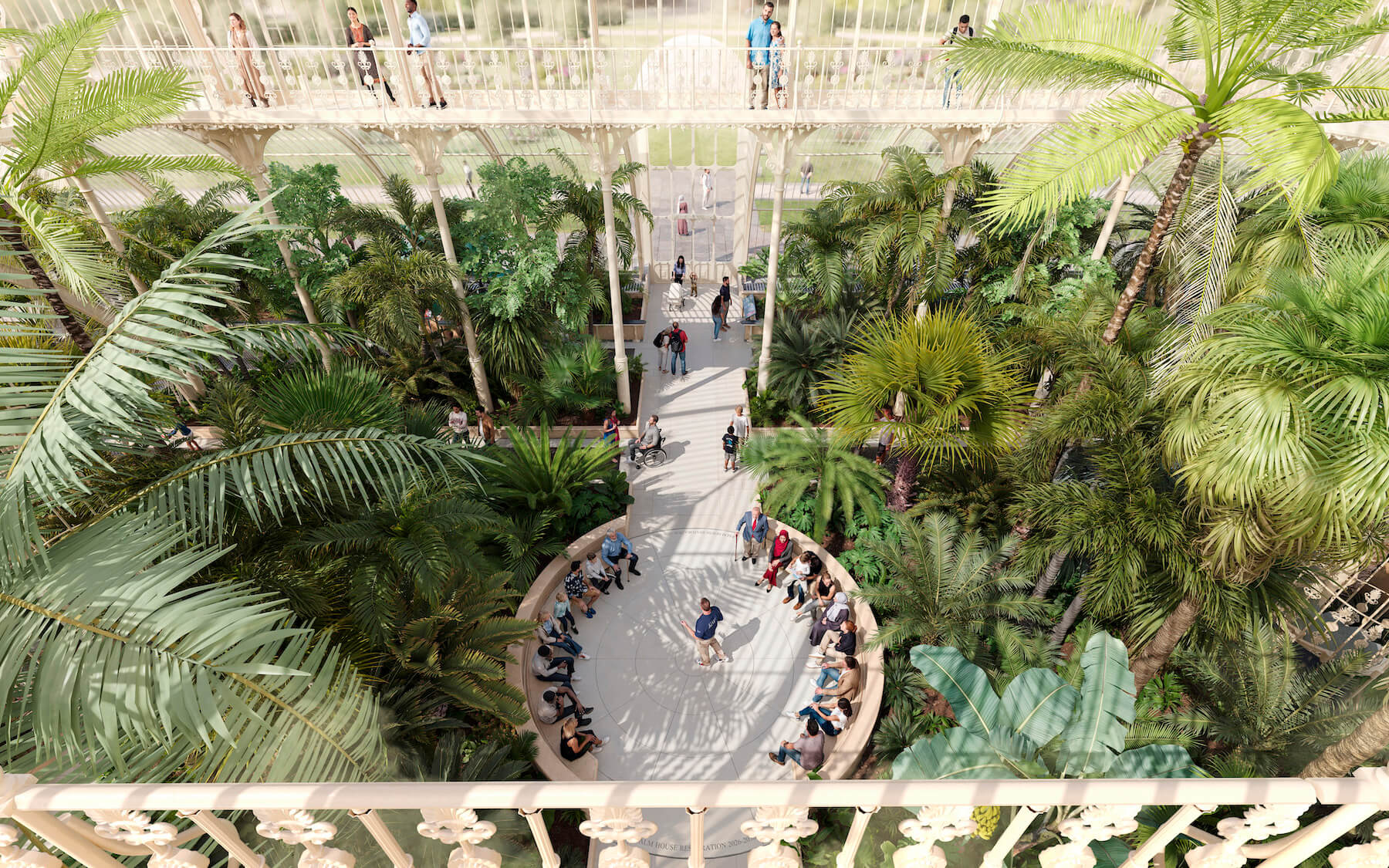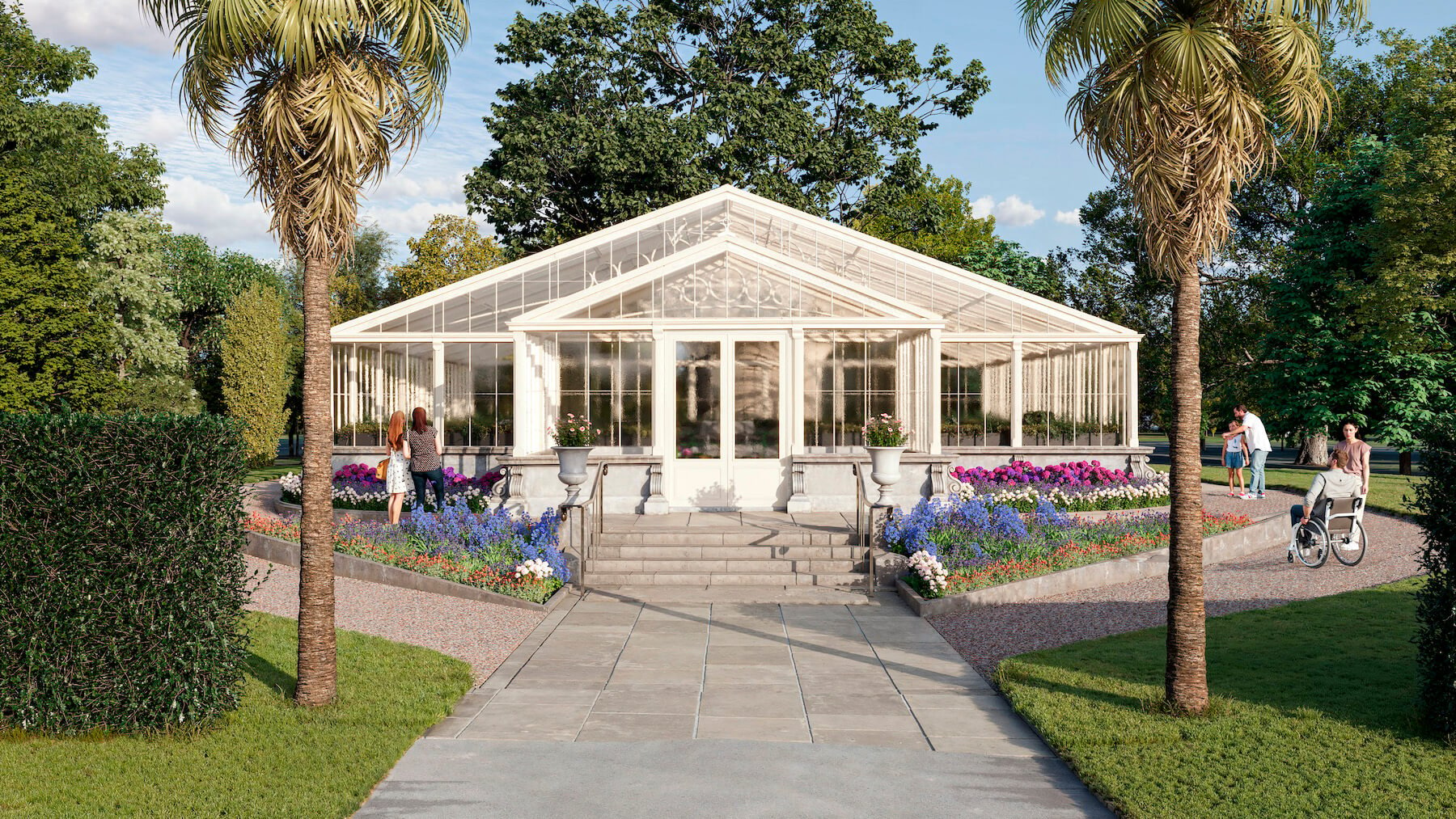Beneath the soaring iron ribs and misted glass of Kew Gardens’ iconic Palm House, a slow transformation is taking place. Newly submitted plans by Hugh Broughton Architects detail an expected £60 million ($80 million) renovation that will preserve the historic Victorian structure, and its smaller counterpart the Waterlily House. Renovation plans call for replacing outdated systems with sustainable technology so as to ensure the long-term survival of more than 1,300 rare tropical plants housed within.
“At the heart of this project is the need to protect the extraordinary plants housed in the Palm House and Waterlily House—besides being beautiful, many of these plants have cultural, scientific and conservation value,” said head of Glasshouse Collections at RBG Kew Tom Pickering. “Achieving net zero in these historic buildings involves striking an unprecedented balance between horticulture, engineering, and architecture. It’s a complex challenge, but one we must strive to achieve.”
Aging Icons
This comes almost two centuries after the Palm House was built. Formally called the Royal Botanic Gardens, Kew (RGB Kew), Kew Gardens sits on the banks of the River Thames in residential southwest London. Kew Gardens was founded in the mid-18th century as a royal estate, with Princess Augusta, mother of King George III, establishing a small botanic garden in 1759. It expanded under botanists like Sir Joseph Banks into a hub of plant research and global exploration. By the early 1800s, it held one of the world’s most important living plant collections.
To house and display these tropical treasures, the Palm House was constructed between 1844 and 1848. Thought of as an icon of Victorian innovation, the wrought iron and glass structure designed by Decimus Burton and engineer Richard Turner, was inspired by the hulls of great ships. Just a few years later, in 1852, the smaller, warmer Waterlily House was built to accommodate the exotic giant waterlily Victoria amazonica, cementing England as a pioneer in the world of science, architecture, and horticulture through the Victorian Era.
Since then, the Palm House and the Waterlily House have undergone several transformations. These have included alterations to how they are powered—from coal to oil, and then to gas. Now, for the first time, renewable energy sources will be used to power both glasshouses, making them the first net-zero buildings of their kind. Today both glasshouses are showing signs of deterioration, as they haven’t undergone a full renovation since the 1980s.
Restoration in Bloom
The redevelopment is being led by the Kew Capital Projects Team, with London-based Hugh Broughton Architects serving as lead designers. They are collaborating with conservation specialists Martin Ashley Architects, structural engineers Ramboll, services engineers Cundall, and construction consultants Firmingers.
At the Palm House, major upgrades are planned to protect its rare tropical plants and improve the visitor experience. All 16,500 glass panes will be replaced and sealed with silicone to reduce heat loss, while the basement will be renovated to strengthen heating and irrigation systems and provide better facilities for horticulturists.

Beyond essential repairs, the redesign aims to enhance circulation and education. A new central gathering space will invite visitors to learn about rainforest ecosystems, while the north and south apses will be opened up to showcase the building’s original design by Burton and Turner. More seating and updated educational displays will be added throughout both glasshouses, including the Waterlily House, where reglazing, heating upgrades, structural conservation, and improved accessibility will take hold.
Outside, the historic setting of the Palm House will also be restored. An ivy hedge that has blocked views of the building for a century will be removed, reestablishing the visual connection to Sir William Nesfield’s ornamental garden. A historic oval path around the Palm House will be reinstated, and a new double ramp will improve disabled access on the west side.

Making the Park Greener
This renovation is part of Kew Gardens’ commitment to being “Climate Positive by 2030. The institution has pledged to cut emissions across its operations, shift away from fossil fuels, adopt low-carbon transport and energy strategies, and invest in nature-based carbon solutions as part of the global Race to Zero.
The project is scheduled to begin in 2027, with the Palm House and Waterlily House closing for four to five years. In preparation, Kew’s horticulturists have already started relocating and propagating the collection—some of which are either endangered or extinct in the wild. Visitors may now spot specialists re-potting, air-layering, and transferring these rare species to ensure their continued survival.
→ Continue reading at The Architect's Newspaper
